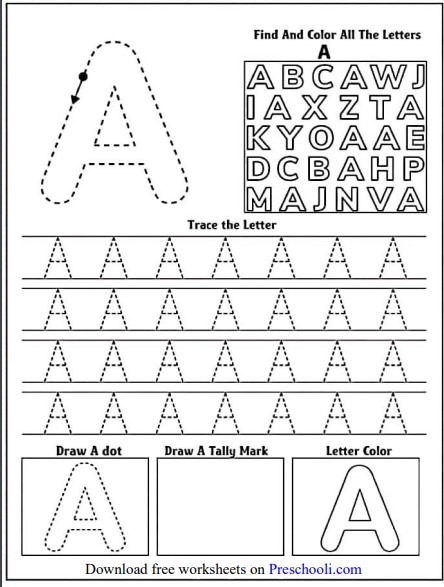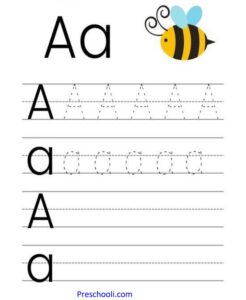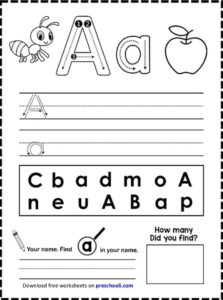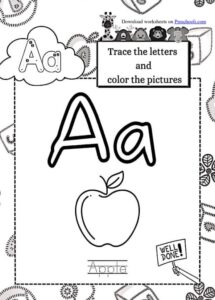Mastering the ABCs: Ultimate Guide to Fun and Effective A to Z Trace Letter
From writing your first name to comprehensive literacy, a to z trace letter is a foundational step in your child’s education. It’s not only about familiarizing them with the alphabet; it’s about honing fine motor skills, grasping correct letter formation, and ultimately preparing them for the adventure that is reading and writing. This in-depth exploration into tracing letters from A to Z is essential for parents, educators, and anyone involved in early childhood development. Here, we cover the why, how, and fun ways to implement this crucial early learning activity.
Understanding the Importance of Letter Tracing
Early schooling involves a myriad of activities, all designed to lay a strong foundation for future learning. Among these, letter tracing is a standout. It’s the bridge that connects seeing and identifying letters to the physical act of writing them. What’s more, it involves muscle memory, all the while training young minds on proper letter formation.
Preschool activities often revolve around tracing. This early practice develops the skills needed for fine motor control, hand-eye coordination, handwriting, and more. By engaging in simple tracing exercises, children enhance these abilities, supporting them in their future scholastic pursuits.
The Benefits of Letter Tracing
- Fine Motor Skills: Tracing activities naturally encourage the use of tiny hand muscles, leading to refined fine motor skills.
- Hand-Eye Coordination: When a child traces a letter, their eyes guide their hands, fostering this vital synchronization.
- Pre-Writing Skills: Letter tracing serves as a precursor to writing and helps children become familiar with the shapes of letters.
- Letter Recognition: By tracing, children actively learn to recognize and remember each letter of the alphabet.
- Intellectual Engagement: The focus required for tracing enhances a child’s attention span and cognitive abilities.
The Ideal Approach to A to Z Trace Letter
While it’s easy to provide children with tracing activities, the manner in which it’s introduced can significantly impact its efficacy. We look at the ideal approach that makes letter tracing fun, educational, and stress-free.
Creating a Positive Tracing Environment
- Start Slow: Introduce letter tracing one at a time, gradually building up the skill set.
- Use Engaging Materials: From rainbow writing with colored pencils to sensory tracing with sand, make tracing a multisensory experience.
- Provide Encouragement: Positive reinforcement is key. Encourage children for each completed trace, irrespective of accuracy.
- Be Patient: Like any new skill, letter tracing takes time. Be patient and provide as much support as necessary.
Structuring Letter Tracing Sessions
- Consistency: Establish a routine for tracing every day, and keep it consistent.
- Short and Frequent: Short, focused sessions are more effective than lengthy ones, especially for very young children.
- Progressive Challenges: Gradually introduce more complex letters and lead children from tracing letters to writing them independently.
- Review and Repetition: Regularly review traced letters and don’t hesitate to repeat the process for better memorization and recollection.
Fun and Creative Letter Tracing Activities
The more enjoyable the activity, the more forthcoming children will be in engaging with it. We’ve compiled a list of ingenious letter tracing activities to keep the fun element high while learning letters from A to Z.
Engaging with Technology
- Interactive Games and Apps: There are numerous apps and games designed specifically for letter tracing that combine the virtual world with physical engagement.
- Digital Tracing Boards: Using tools like electronic writing pads can make the tracing experience feel more like play.
Kinesthetic Tracing
- Gross Motor Tracing: For larger schools, have children walk, skip, or hop to trace the letter’s shape on the ground.
- Body Movement: Get children to use their whole body to mimic the shape of the letters in the air.
Artistic Tracing
- Chalk and Erase: Use chalk to write letters on a blackboard or sidewalk and have children trace over them with a wet sponge or cloth.
- Clay and Playdough: Create the alphabet shapes with playdough and encourage children to follow the lines with their finger or a rolling pin.
Culinary Tracing
- Frosty Letters: Practice letter tracing by piping alphabet shapes with frosting onto cookies or cake.
- Pasta Shapes: Cooked spaghetti can make an excellent, albeit messy, medium for tracing letters before eating.
Resources to Aid in A to Z Trace Letter
While creativity goes a long way in making tracing activities entertaining, it’s equally important to have resources that support learning. Here are a few:
Printable Worksheets and Guides
- Free Online Pintable’s: The internet is a treasure trove of freebies from simple tracing lines to complex design patterns.
- Tracing Workbooks: Purchase or create workbooks that offer a structured approach to tracing each letter.
Tracing Tools and Instruments
- Tracing Paper, Pencils, and Pens: Elementary tools for the job that can be found in most stationery sets.
- Dry-Erase Boards and Markers: These offer a reusable option and are particularly handy for daily practice.
Making the Most of Letter Tracing Sessions
To have the most significant impact, you need to ensure that the time dedicated to letter tracing is purposeful and engaging.
Planning Your Tracing Lessons
- Set Specific Goals: Determine what you want to accomplish with each letter tracing session.
- Prepare the Environment: Ensure that the area where you’ll be tracing is comfortable and free of distractions.
- Incorporate Different Strategies: Mix and match between different tracing methods to avoid monotony.
Real-Life Letter Tracing
- Contextual Tracing: Encourage children to spot and trace letters in their environment, such as signs, labels, and books.
- Letter Writing: After tracing, have children write simple words or sentences using the traced letters to reinforce learning.
Ensuring Continuous Improvement
Assessing a child’s progress in letter tracing is vital for adjusting the approach and continuously improving.
Observing and Providing Feedback
- Observe Grip and Movement: Pay attention to how the child grips the pencil and the correctness of the tracing movement.
- Offer Constructive Praise and Corrections: Point out both what the child is doing well and areas for improvement.
Progress Tracking
- Journaling or Diary: Keep a journal of the progress made, including samples of traced letters.
- Regular Check-ins: Periodic reviews will help ensure that children are on the right track.
Download Our A-Z Letter Tracing Starter Kit
To jumpstart your child’s tracing adventures, we’re offering a comprehensive starter kit that includes printable worksheets, creative activity ideas, and tips for successful learning.
What’s Included in the Kit
- Printable Worksheets: A complete set of covers the entire alphabet, specially designed to make tracing not only educational but also enjoyable.
- Activity Planning Guide: A step-by-step guide to planning and conducting effective letter tracing sessions.
- Resource Recommendations: Our top picks for the best tools and materials to use when tracing.
How to Get Your Kit
To get your hands on our exclusive starter kit, simply click the link to download now. It’s absolutely free and ready to use.
Don’t wait. Your child’s literacy adventure starts with mastering the art of tracing from A to Z.
Download your kit today and watch as they blossom into a proficient writer and reader.
Join our Facebook Group



